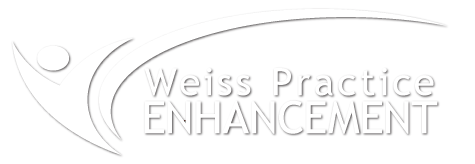What is the primary reason your employees even think about leaving your practice?
If you’re like most business owners, you believe employees think about leaving in order to make a higher salary or to gain a promotion.
But when asked, 88% of employees leave for reasons outside of money: most often because they want to feel more trusted and valued. For more insight on this issue, read the article Why Do They Resign?
So, if you have employees who look unhappy or who are actively interviewing elsewhere, there is a good chance they are not feeling valued or appreciated by you. Confirming this, a Gallup report indicated that almost 70% of Americans say they don’t get praise or recognition at their workplace.
A big part of the problem is that we misunderstand what appreciation and recognition really are and we conflate both with rewards. Let’s define these terms better.
Appreciation centers on who someone is. You may appreciate that an employee is honest or loyal.
Recognition focuses on an employee’s actions and accomplishments.
Rewards are generally tangible gifts to acknowledge an employee’s successful actions.
It’s important that we’re clear on these differences. Ideally, you express both appreciation for your employees as people and recognize them for their contributions. If you offer rewards, they need to be tied to the person’s preferences. This is all easier said than done.
Mistakes Dentists Make:
- Believing “Thanks” or “Good job” is a message of appreciation. These are expressions of praise which are more appropriate for potty training toddlers or puppies. There just isn’t enough nutritional value in these phrases to feed an employee’s self-esteem. Praise is like eating twinkies: nice, but not filling.
- Waiting until an employee does something spectacular to offer recognition. Some dentists believe you shouldn’t praise folks for simply doing what they are paid to be doing. But this is like hoarding appreciation until there is a “legitimate” time for it. Imagine the impact of noticing a team member who is consistently early by saying, “Esmeralda, I see and appreciate how diligent you are in arriving at the practice 15 minutes before huddle. Your dedication helps our day run smoothly.”
- Expressing appreciation to the team as a whole instead of recognizing individual performance. The message and intent are diluted when employees don’t hear how they personally contributed to a success. Expressing appreciation to the whole team is like delivering criticism to the whole team. The person you most want to hear the message, doesn’t realize it’s directed to them.
- Not learning how each person WANTS appreciation and recognition and using a one-size fits all approach. My former boss only praised me in front of people – which I found uncomfortable. I interpreted it as an insincere public relations move and it made me feel even less valued. You need to match the person’s preferences or it will backfire.
- Conflate recognition with appreciation. Recognition tends to focus on rewarding an employee for an achievement, like recognizing a DA who has become an EFDA. But you can’t limit your feedback to employees to only the times they succeed at something. You must also acknowledge and reinforce attitudes, characteristics, and efforts that support your vision.
Different Preferences
In their book, The Five Languages of Appreciation, Dr. Gary Chapman and Dr. Paul White describe five different ways people like to be appreciated. These are:
- Words of affirmation
- Acts of service
- Quality time
- Tangible gifts
- Physical touch
One thing you may find surprising, is that the authors found that tangible gifts were not highly prized by employees. But if I told you that you needed to express your appreciation for your team, wouldn’t your first thought be to get them a gift or offer a monetary reward? Gifts are nice, but in order to be motivational, they need to carefully match the recipient.
You may have also noticed the preference for physical touch. This can be dicey, of course, in the workplace, so I wouldn’t advocate that you suddenly start hugging your staff.
Let’s examine the other expressions of appreciation: words of affirmation, acts of service and quality time.
Words of Affirmation: This is deeper than praise. This is where you notice your employee’s efforts and connect them with positive results. “Esmeralda, I see how hard you are working on our reactivation list. I admire your focus on filling our schedule and I respect your dedication. You have made a great difference in our practice and I appreciate all you do.” Notice how genuine this sounds and how it reinforces Esmeralda’s behaviors.
Acts of Service: Wouldn’t you love a neighbor who periodically mows your lawn when they do their own? When you provide acts of service to your employees, you get alongside them to finish a task. Imagine you sat beside your front desk team at the end of the day and filed EOBs with them so they could leave earlier. This doesn’t mean taking on their jobs permanently; it does mean modeling an ethos of giving and compassion.
Quality Time: Consider how little time you actually spend with each employee, just talking and listening. For most dentists, the only one/one time they spend with their team members is doing the annual performance review. Instead, imagine you set up a weekly lunch schedule where one day a week was designated as a one/one employee lunch. Your agenda would be to get to each team member and learn if there is anything you can do to help them in their jobs.
The title of this article is “Appreciation as a Retention Tool” because there is a correlation between how employees feel about you and their level of commitment to the practice. A common saying is that employees don’t leave the business; they leave their boss. But expressing appreciation is not only about retaining employees, it is also about creating a practice culture where team members thrive and are motivated to contribute.




